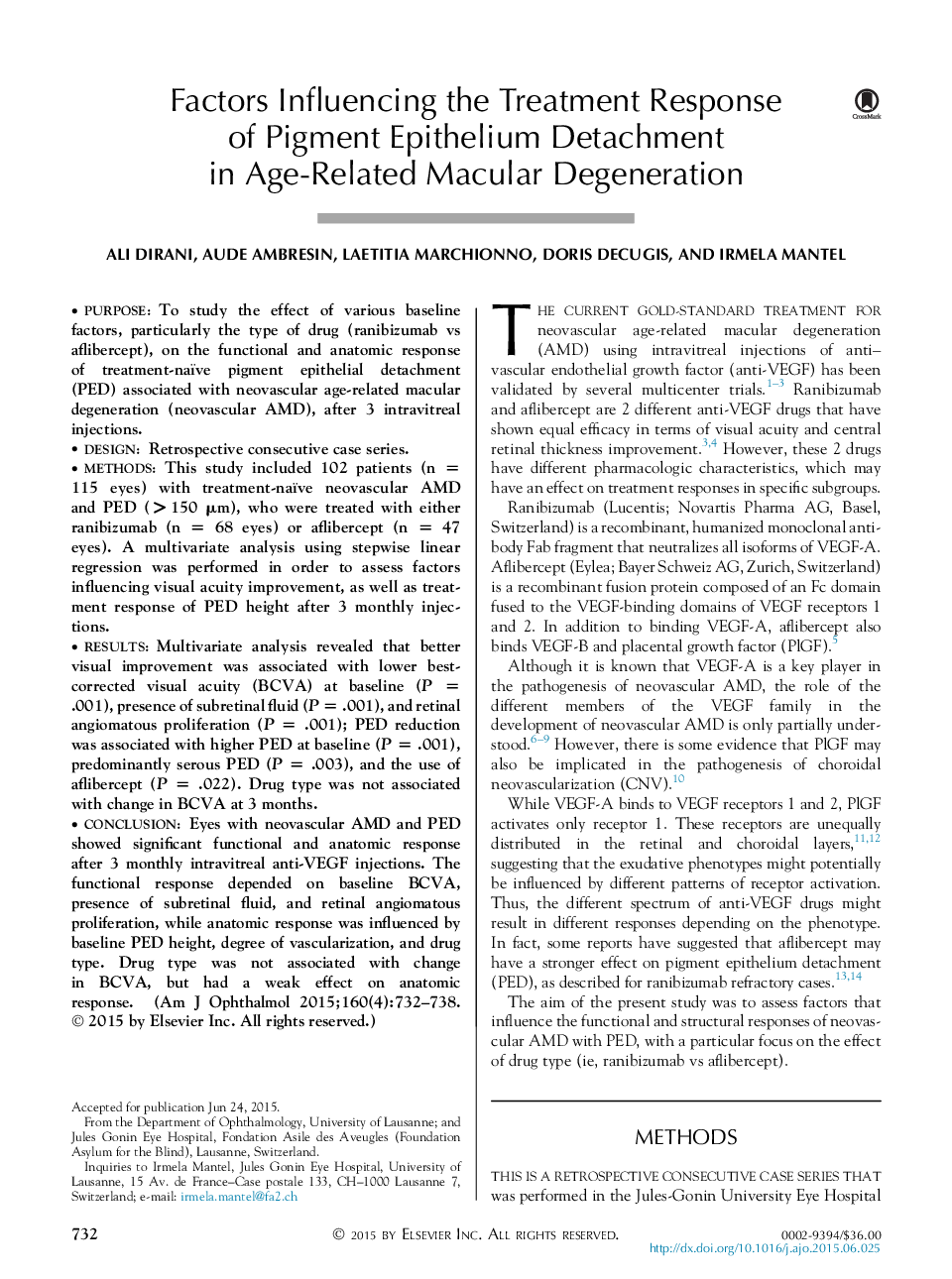| کد مقاله | کد نشریه | سال انتشار | مقاله انگلیسی | نسخه تمام متن |
|---|---|---|---|---|
| 6195026 | 1602119 | 2015 | 9 صفحه PDF | دانلود رایگان |
PurposeTo study the effect of various baseline factors, particularly the type of drug (ranibizumab vs aflibercept), on the functional and anatomic response of treatment-naïve pigment epithelial detachment (PED) associated with neovascular age-related macular degeneration (neovascular AMD), after 3 intravitreal injections.DesignRetrospective consecutive case series.MethodsThis study included 102 patients (n = 115 eyes) with treatment-naïve neovascular AMD and PED (>150 μm), who were treated with either ranibizumab (n = 68 eyes) or aflibercept (n = 47 eyes). A multivariate analysis using stepwise linear regression was performed in order to assess factors influencing visual acuity improvement, as well as treatment response of PED height after 3 monthly injections.ResultsMultivariate analysis revealed that better visual improvement was associated with lower best-corrected visual acuity (BCVA) at baseline (P = .001), presence of subretinal fluid (P = .001), and retinal angiomatous proliferation (P = .001); PED reduction was associated with higher PED at baseline (P = .001), predominantly serous PED (P = .003), and the use of aflibercept (P = .022). Drug type was not associated with change in BCVA at 3 months.ConclusionEyes with neovascular AMD and PED showed significant functional and anatomic response after 3 monthly intravitreal anti-VEGF injections. The functional response depended on baseline BCVA, presence of subretinal fluid, and retinal angiomatous proliferation, while anatomic response was influenced by baseline PED height, degree of vascularization, and drug type. Drug type was not associated with change in BCVA, but had a weak effect on anatomic response.
Journal: American Journal of Ophthalmology - Volume 160, Issue 4, October 2015, Pages 732-738.e2
